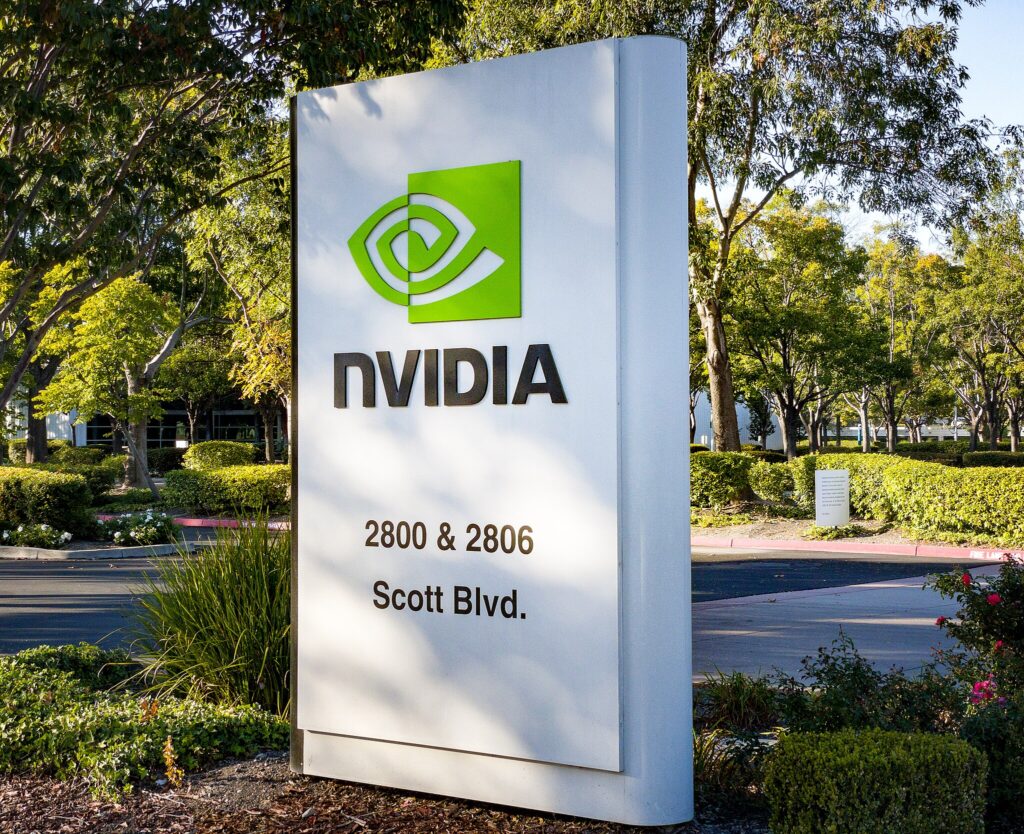A tall slender figure gazes out across the New York skyline from plush new offices in the world-famous Hudson Yards. The streets that once bore the hallmarks of his shoe leather twinkle in the distance while the vista from the 74th floor vantage point provides breathtaking views across the most iconic metropolis in the world.
Almost a year ago to the day, ServiceNow opened its newest office in New York. The building is spectacular and the office space is adorned with sleek work stations, incredible social areas and an understated office in the corner occupied by its CEO. The company already has 25 offices in the US, but this is a statement piece. Bill McDermott has come home.
In August of this year, I met with McDermott and the ServiceNow team for an update on their progress with a particular focus on AI and the mission to become the defining enterprise software company of the twenty-first century.
The ServiceNow story is already a sensation; the fastest to $5bn in organic revenue and closing in on $10bn, the only major player to retain headcount through the pandemic, already a Fortune 500 company and the hottest tech brand on the lips of every CIO. Some have questioned whether it will plateau or if its indefatigable leader would run out of steam. From where I am standing, the ServiceNow train is just getting started and the momentum it will carry into 2024 will be the catalyst for a defining year ahead.
In the last issue of ERP Today, I espoused ServiceNow’s likening to the iPhone and suggested that we are on the brink of “a great unification”, akin to how Google unified search some twenty years earlier. A combination of three significant market forces is coalescing at precisely the right time and ServiceNow is uniquely positioned to capitalize on the opportunity.
Artificial intelligence
The future will be defined by artificial intelligence and, while others are scrambling to find their AI story, ServiceNow started its conversation almost six years ago. “Others issued press releases, we released products,” McDermott quipped on a recent earnings call. “One of the first things I did when I got here in 2019 was to acquire Element AI and we got a large workforce of researchers, data scientists and world-class AI engineers,” he told me. “AI isn’t new for ServiceNow, we have been building it into our platform for years and working with Nvidia on large language models for all that time.”
We have over 300 customers in our pipeline from every industry, every buying center and every stage of testing. Our GenAI sales kick-off drove the highest number of customer requests for a pre-release product in our history – Bill McDermott, ServiceNow
Unlike other technologies that have emerged with very short hype cycles, AI is here to stay. “We believe every dollar of global GDP will be impacted by AI over the next several years,” said McDermott. “It will become a ubiquitous force that powers every aspect of an enterprise from strategic operations, purchasing decisions, sales and supply chains, right down to impacting the individual worker’s day-to-day tasks through AI assistants.”
In late 2022, the AI narrative was turned up a notch with the emergence of ChatGPT and since then many of us have had our first experiences with the newest breed of artificial intelligence. I asked McDermott what was driving the demand in AI services and his response was quick to the point. “It took Netflix three and a half years to get to 100 million users – it took ChatGPT five days,” he said. “That tells you everything about the demand and interest in AI.”

Today, every software company on the planet is talking about GenAI but it’s easy to be lulled into thinking that all you need is a subscription to OpenAI and you are in business. AI needs three things to make the magic happen; it needs a platform or medium as a host, a task to feed on and an ability to execute its outcomes quicker, easier or more accurately than a human could – that’s the simple recipe.
There’s certainly no shortage of tasks to keep AI busy and its ability to outperform humans has been in evidence for a while. It’s the platform or host that is the variable factor and ServiceNow has got that covered across multiple domains and workflows.
“Our Vancouver release includes generative AI-powered Now Assist for every workflow,” said McDermott. “Generative AI represents 36 percent of AI spending overall and we have over 300 customers in our pipeline from every industry, every buying center and every stage of testing. Our GenAI sales kick-off drove the highest number of customer requests for a pre-release product in our history.”
CIOs have a choice: invest hundreds of millions in a project and get it done in five years or make something happen with ServiceNow in a few weeks, maybe a couple of months, that puts that system in a position where it can actually be fresh again, because all the complexity can be hidden.
If AI is the first and foremost market force that will drive the next era of innovation and growth, what are the other two factors that are converging to ServiceNow’s benefit?
Firstly, the age-old problem of ERP modernization shows no sign of abating – if anything the pain of transforming ERPs is getting worse, not better. While ERP vendors are forced to come up with evermore elaborate ways to mask the pain of moving from old systems to new, ServiceNow offers to do this at a stroke.
“ERP was developed for the enterprise, not the user,” McDermott told me. “Power users loved it and everyone else hated it.”
Today, user experience is vital and CIOs have a choice: invest hundreds of millions in a project and get it done in five years or make something happen with ServiceNow in a few weeks, maybe a couple of months, that puts that system in a position where it can actually be fresh again, because all the complexity can be hidden.
The final market force that is playing into ServiceNow’s hands is a fundamental shift in the definition of work. We are witnessing the mass simplification of work on a scale never seen before, with AI and the public cloud as the engine and enabler. The industrial revolution turned employees from metal bashers to machine operators relatively quickly, but the digital revolution has not eliminated grunt work in the same way. In fact, it has increased the burden of low-level data, administration and digital activities with the vast majority of employees complaining that their daily routine is mired in repetitive and boring keyboard-based tasks.
“Just take healthcare as one example,” said McDermott. “Typically, 80 percent of your visit is taken up with someone keyboarding information or form filling. Then you tell them what’s wrong with you and they keyboard that and by the time the doctor has read the notes the visit’s over. With AI assistants, AI-powered workflows and GenAI capabilities, that’s not going to happen anymore. Healthcare professionals will spend all of their time taking care of patients and all of the admin burden will disappear.”
The same logic can be applied to virtually any job type: the salesperson with sales decks that are generated by GenAI, automations for the shop floor and engineers, shipping and supply chains optimized at every step. All of which have a common connection: the human does the job that was always intended for them while the AI does all the administration and grunt work that enables the employer to be more efficient and happier in their role.
ERP modernization
Two initiatives within the SAP ecosystem caught our attention recently that perfectly illuminate the challenges for proprietary ERP publishers. NTT Data, one of SAP’s primary implementation partners, is offering to repurchase legacy SAP licenses to help ease customer cloud migrations. While this unusual move could have some benefit to the customer, it is a stark indication of the challenges ERP customers are facing.
It is often touted that ServiceNow is eating into ERP budgets and adding to the challenges that SAP and others are facing when trying to convert their install base to SaaS. But McDermott was quick to point out that ServiceNow isn’t taking IT budgets away from ERP vendors and, in fact, in some cases they are actually helping ERP vendors stay in the game.
“ServiceNow’s platform is actually their best friend because it makes their platforms relevant again,” said McDermott. “The problem is they are looking at it as a zero-sum game based on the IT budget, but it’s not a zero-sum game. Most of the business cases that we see have nothing to do with taking their spend and moving into us. It has everything to do with creating a net new innovation that never existed before. If you don’t have net new innovation, you’re not going to get net new spend. And that’s not going to be because of ServiceNow, it’s going to be because of what you did or didn’t invent.”
In addition to these net new innovations, ServiceNow and its partners are actively building capabilities to support ERP customers that are caught between a rock and a hard place. One great example can be found in Eviden’s ElevateNow product which is designed specifically for SAP customers.

Aside from loss of functionality, higher costs, disruption and risk, the biggest barrier for SAP customers to move to S/4 is the migration path for customizations. These developments have been hard-coded into the core of the ERP system over decades and allowed the customer to fine-tune the solution to its specific needs. All well and good until that customer looks to the cloud and realizes that none of what it has developed can be easily replicated.
Using the Now platform, Eviden has developed a method of building these functions in the ServiceNow environment, allowing customers to effectively move their customizations to the cloud without having to go through a full ERP migration.
I am not sure whether SAP sees this as a help or a hindrance but customers who cannot or will not subscribe to S/4HANA on SAP’s timetable may see the benefit of a halfway house until they are able to commit to a full-scale ERP project.
“If people always do what they always did, they’ll always get what they always got,” said McDermott. “The reason I love our chances to scale to infinity and beyond, is because we have the platform for what this generation wants and needs.”
The platform for a generation
There’s a phrase in Formula 1 that’s used to simplify the strategy of tire choice and when to bring the car in for fresh rubber – “be on the right tires at the right time” – which basically encourages teams not to complicate their decision making and do what the driver needs at that moment.
It may seem like an obvious statement but with such fine margins, evolving track conditions and changing weather, picking the correct compound of tire, understanding the level of degradation and knowing when to change is crucial to a driver’s success. That simple explanation for a very complicated problem reminds me of the dilemma many CIOs are facing when deciding what tech to invest in. The answer is as simple as the tire conundrum – ask your teams what they need now and give it to them.
What do you want to be best known for? Is it upgrading an existing ERP system or bringing in technology that delivers immediate value, net new innovations and a user experience that is unmatched? – Bill McDermott, ServiceNow
That whole answer isn’t to ignore the bigger challenges, but the truth is it’s unclear whether the future will render many of those issues moot. Who knows what GenAI innovations are round the corner? Five years is a very long time right now and placing bets which have that kind of expected ROI requires bravery and a crystal ball.
What I hear from business leaders is that they are under immense pressure to simplify their processes, to increase employee satisfaction, to win in the talent war and to redefine their business model with AI as a central component. McDermott had a clear message for these CIOs: “What do you want to be best known for? Is it upgrading an existing ERP system or bringing in technology that delivers immediate value, net new innovations and a user experience that is unmatched?”
Put like that, it’s hard to find the argument for pouring millions of dollars and countless resources into technology upgrades that can’t make the same promises.
2024 and beyond
There’s no sense from McDermott that he is slowing down, quite the opposite in fact. He was as motivated and energized as ever and I actually felt like he was charging even harder than before, if that’s possible.
But, at the age of 62 and having taken ServiceNow to its current dizzy heights, McDermott is considering the future and building a plan to ensure the company’s continued evolution. Taking the position of chairman is the first move towards building a succession plan which would retain McDermott as executive chair, or something similar, and pave the way for a new leader to assume the CEO role.

I asked McDermott if assuming the chairman role was a source of pride and he explained: “It’s wonderful to have that kind of trust with the board. And in particular, with Fred, the founder of the company,” he told me. “Candidly, it had more to do with the right thing for ServiceNow than it did a title. I really don’t care about titles. What I really did care about and the reason I am honored and proud of our company, is because now I’m able to initiate a long-term commitment and succession plan.”
However, McDermott was quick to point out that his time isn’t up just yet. “There’s still plenty of work to do and I am more excited about the future than ever,” he said.
My personal bet is that McDermott will see the company to $15bn in revenue and then start to think about who is the right person to steer the ship through the next phase. His long-term commitment to the company is assured and, by the time that revenue threshold is reached, he will probably have established ServiceNow as the AI company for the enterprise.
It was Bill’s big dream to create the defining enterprise software company of the twenty-first century and he’s getting close to delivering another landmark victory. It’s almost time to start thinking about another book, but not just yet.




